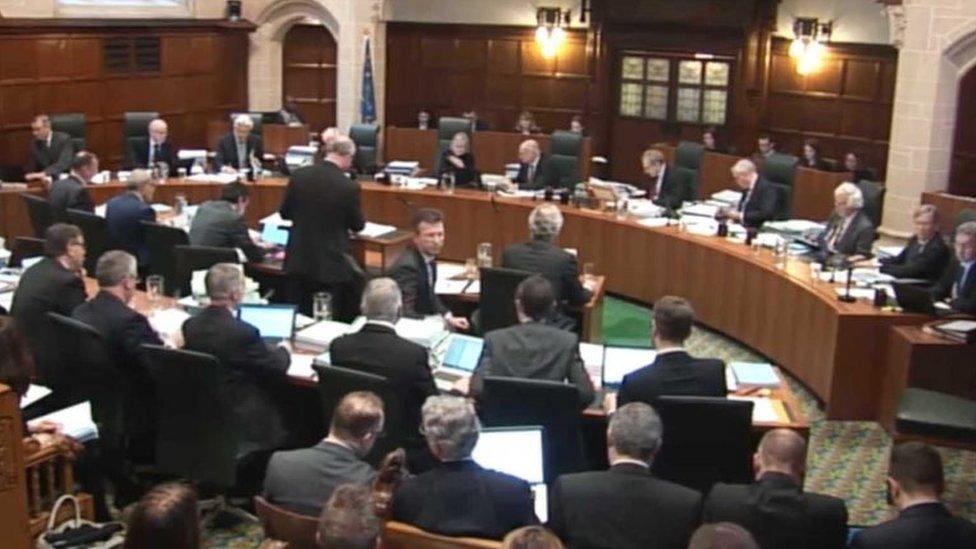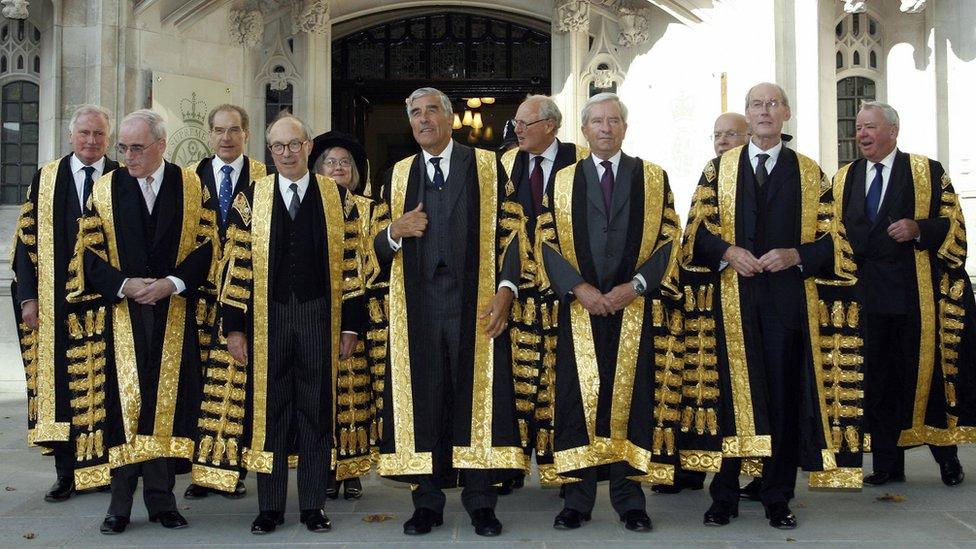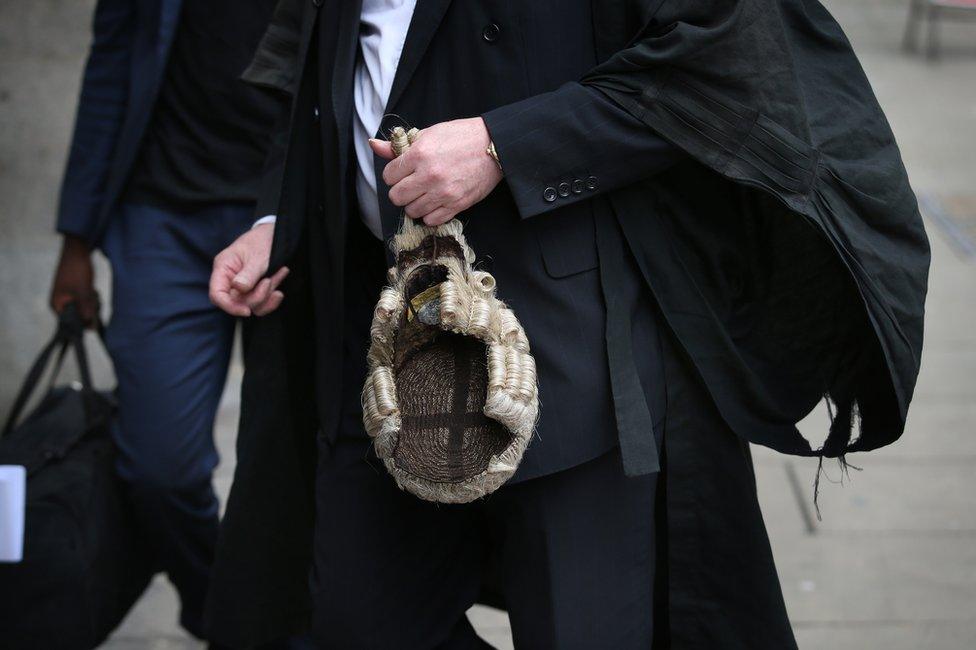White men only? Brexit case and legal diversity
- Published

With the government's battle over Article 50 going to the Supreme Court, there has been much comment about the gender and ethnic make-up of the judges and barristers at work. How accurate a reflection is it of the legal profession's make-up?
"Not much sign of diversity," writes one woman, showing a still photograph of proceedings in the Supreme Court, a group of white middle-aged men engaged in debating issues of enormous constitutional importance. "More to do," adds another, male Twitter user.
"Glad to see the diversity of the UK so ably represented by a large group of white middle-aged men," adds another.
On the other hand, someone writes: "The most important Supreme Court case in UK history & these numpties are worried about diversity?" And another suggests commentators, including the BBC, should "shut up about this non-issue".
The debates certainly aren't new, but what are the basic facts about the makeup of the legal profession in England and Wales - solicitors, barristers and the judiciary?
Judges

According to last year's Judicial Office Statistics, external, a quarter of all judges in England and Wales were women.
Among the youngest group, under the age of 40, it was 53%, while among those aged over 50 it was 13%. Among the 11 supreme court judges in this case one is a woman - 9%.
The Judicial Office Statistics suggests this shows there is a "movement towards more female judges".
Meanwhile, the proportion of judges describing themselves as black and of other ethnic minorities was 5.9% last year, up from 5.1% in 2011.
Barristers

The Bar Council has promoted what it calls "momentum" towards a greater representation of female and ethnic minority among barristers in England and Wales.
It says the number of women called to the bar - being qualified to argue in court - became larger than men doing the same "around the year 2000" and this trend has "generally continued" since.
The Bar Council has set a target of 20% of barristers being black or from other ethnic minorities.
Among those called to the bar this has been "exceeded" since the early 1990s and, since 2010, this group has "constituted more than 50% of those called to the bar", the council adds. But it urges caution, as a large number of barristers called in any year do not live in the UK and go on to practise in other countries.
On gender, the council notes a "steady increase in the proportion of qualified working-age barristers that are female" - from 36% to 44% over 10 years.
It suggests that its plan of having 50% of barristers being female will be achieved within 20 years, although this might be "overly optimistic".
The council's own model predicts a "rapid increase" in the proportion of practising barristers who are black and of other ethnic minorities from 17% last year to "20% and beyond" within a decade.
But it acknowledges that measuring ethnicity can be "problematic".
QCs
And what of Queen's Counsels - the senior barristers who tend to handle the highest-profile and most-complex cases, such as the government's over Article 50?
In 2014, women made up 13% of QCs, the Bar Council suggests.
Those who were black or of another ethnic minority group represented one in 10.
Solicitors
As of 31 July last year, there were 133,367 solicitors with certificates to practise in England and Wales, according to the Law Society, external.
The proportion of these from black and other ethnic minority backgrounds was 13.9%.
And, 48.8% were women and 51.2% were men.